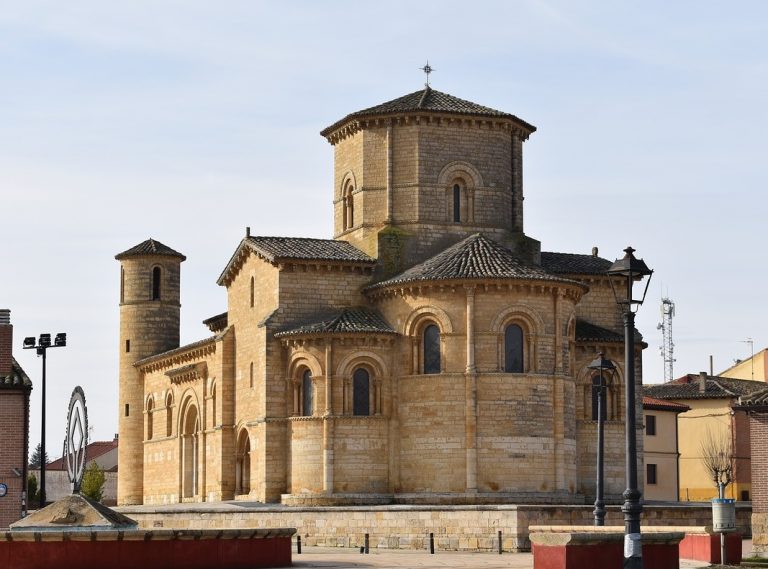Palencia is a small city located in the interior of Spain, in the north of the region of Castile and León. It is a typical Castilian city, peaceful and very attractive for tourism because of its monumental and historical richness and its appreciated landscapes, as well as its great commercial and gastronomic offer.
Known as Pallantia in Roman times, it was the place chosen by King Alfonso VIII of Castile to establish the first university in Spain in 1208. It currently has around eighty thousand inhabitants and is perfectly communicated, making it a strategic point for outsiders.
In this website you will find a detailed tourist guide about the city of Palencia and the whole province. A tour through its historical and artistic heritage, museums, gastronomy, flora and fauna of the region, restaurants, hotels and rural houses, emphasizing the charming villages.
Tourism in Palencia, the Unknown Beauty
The city of Palencia holds the key to a province that encompasses great diversity, from the Palencian Mountain to the Tierra de Campos plain.
The Mountain of Palencia is a privileged environment for its natural places among which the Natural Park of Fuentes Carrionas, the Route of the Swamps, the Natural Reserve of the European Bison, the Cave of the French, and the viewpoint of Covalagua stand out.
In the northern area, Romanesque art predominates, where small hermitages, monasteries and temples with many patterns of this architectural style await. But the Romanesque does not limit its splendour to the mountains. The Way of St. James (Camino de Santiago), which runs through the province from east to west, brings together some of the most outstanding examples of Spanish Romanesque architecture in the churches of Santiago de Carrión and San Martín de Frómista.

For many years, the Palencia cathedral has been nicknamed “La Bella Desconocida” (The Unknown Beauty) and this same description serves to describe the charms of the capital, which boasts one of the most interesting architectural ensembles of any Spanish city. To know Palencia, the visitor must surrender to the urban tourism, walk along the streets that branch out from the Main Street, visit the Gothic and Renaissance churches, the emblematic bridges over the Carrion River and the extensive green areas that flood the city. The Cristo del Otero (Christ of the Knoll) that watches over Palencia from a hill and numerous museums complete the cultural attractions of this city unknown to tourism.
A section is dedicated to the Canal de Castilla, a work of hydraulic engineering that runs through the province from the fertile plain of Alar del Rey to the limits of Dueñas and Belmonte. It had a fresh water shipyard in Villaumbrales, next to the Casa del Rey. Tourists can repeat the mirage of sailing the Campos Sea on board the Marqués de la Ensenada in Herrera de Pisuerga. The locks, the river port of Alar del Rey, the dock of Palencia and the bicycle routes following the channel are worth mentioning.
There are two rivers, with their respective plains, that run through the province of Palencia. The Carrión river runs vertically from the Cantabrian mountain to the Cerrato region, where it joins the Pisuerga river to flow together into the Duero. At its origin the river Carrión is fed by the snow from the peaks where it is born to supply the reservoirs with water. Following the course of the river, it arrives at the Roman Villa La Olmeda in Pedrosa de la Vega, and then runs alongside the Monastery of San Zoilo in Carrión de los Condes. It divides in two as it passes through the capital, giving rise to the Dos Aguas Island, flows at the foot of the Calabazanos adobe Escorial and ends its course in Dueñas with the Trapa monks. Surrounded by forests, the Pisuerga River rises in the Cueva del Cobre and also flows vertically through the province from the northern mountainous areas, passing through Aguilar de Campoo where the aroma of biscuits from its powerful industry reaches us, while it flows south. From the course of the river we can see the medieval remains of the Castle of La Mota in Astudillo and the Basilica of San Juan in Venta de Baños allows us to decipher the magic of Palencia.
Several popular celebrations fill the streets with joy and popular happiness. The religious traditions celebrated in honour of the city’s patron saints are especially relevant. The central day of the big festivities of Palencia is the 2nd of September, San Antolín. The Holy Week, declared a festival of International Tourist Interest, and the pilgrimage of Santo Toribio, with the “bread and cheese stones” from the Otero hill, are some of the most interesting ones. Outside the capital, the flower carpets that fill the streets of Carrión de los Condes on the day of the pilgrimage stand out.
In the gastronomy, the roasted lamb is the star of the kitchens; equally traditional is the vegetable stew made with products from the Palencia’s garden, the Castilian soup and the game dishes, such as the pickled partridges. Dishes with crabs or snails are also common, especially tasty because of the sauces that accompany them; without forgetting the sausages from Palencia. To put the sweet spot, among the most emblematic desserts are the amarguillos from Villoldo, the orejuelas with honey, the fried milk and the ciegas from Saldaña.